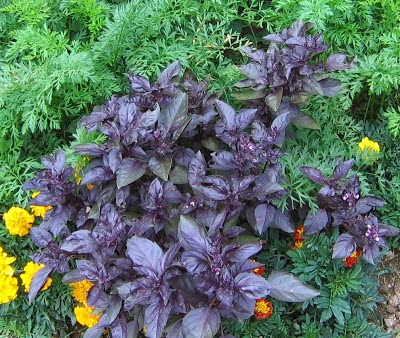I was thinking the other day about my gardening goals for this year. And then I began to wonder if it is even worthwhile to have gardening goals. So much depends on circumstances beyond our control. But I guess I do make goals each year. Of course there is the obvious one: To Do Better. And then the universal goal of vegetable gardening: To Feed Ourselves. But that second one is pretty basic and easy. I don't remember the last time I bought a bean, pea, pepper,asparagus, potato, onion, garlic, cucumber or pickle but I do know it is a matter of years, not weeks or months. And there are a lot of other things I buy only as a treat out of season like lettuce, apples and strawberries and a few things I have to supplement because we eat more than we grow such as black beans and horse radish. But then there are the odd ball things that I have yet to master. I guess my basic goal is to learn more and expand my production in both quality and quantity.
This year my gardening goal is to grow a melon. It can be either a watermelon or a cantaloupe. I have plenty of plants started and they're doing well. But this will be my first serious attempt. Last year I made a half-hearted attempt with two or three plants of each. This year I have planted sixteen cantaloupe plants and almost two dozen Moon and Stars watermelon plants
 |
| Moon and Stars Watermelon |
I think more than goals, gardeners have hopes. I hope this year is a good tomato year and that the stink bugs don't kill all my squash plants. I hope the powdery mildew doesn't get out of hand. Same goes for blight. I hope the Okra plants produce something this year. Anything. Even a flower. I hope the rainfall pattern is such that I don't have to spend four weeks straight getting up half an hour early to water seven days a week. I hope I don't tire of the sport of exterminating Japanese Beetles, Asparagus Beetles, Flea Beetles, Cucumber Beetles ...and Slugs.
 |
| Burgundy Okra |
As I have read back through several years of blog entries I have noticed a few things. #1 we are happily not under siege by dozens of destructive raccoons. #2 the deer are keeping a respectful distance. #3 the slugs are virtually non-existent. #4 we have not yet had a full force invasion of any particular beetle. This is an amazing luxury. I have not had to go out each morning to repair damage and deal with trapped/dead vermin.
Another thing is that I've had pretty good year for germination on everything from Eggplants to Zinnias. The direct sow plants are doing as well as the pampered and coddled indoor starts. Extra plants have been distributed and delivered. I have a flat of cucumbers to transplant after the second black bean bed is planted (they go along one side) and then we're done until we start picking peas.
 |
| Romaine and Butter Crunch Lettuce beside the peas |
 |
| Potatoes |









































